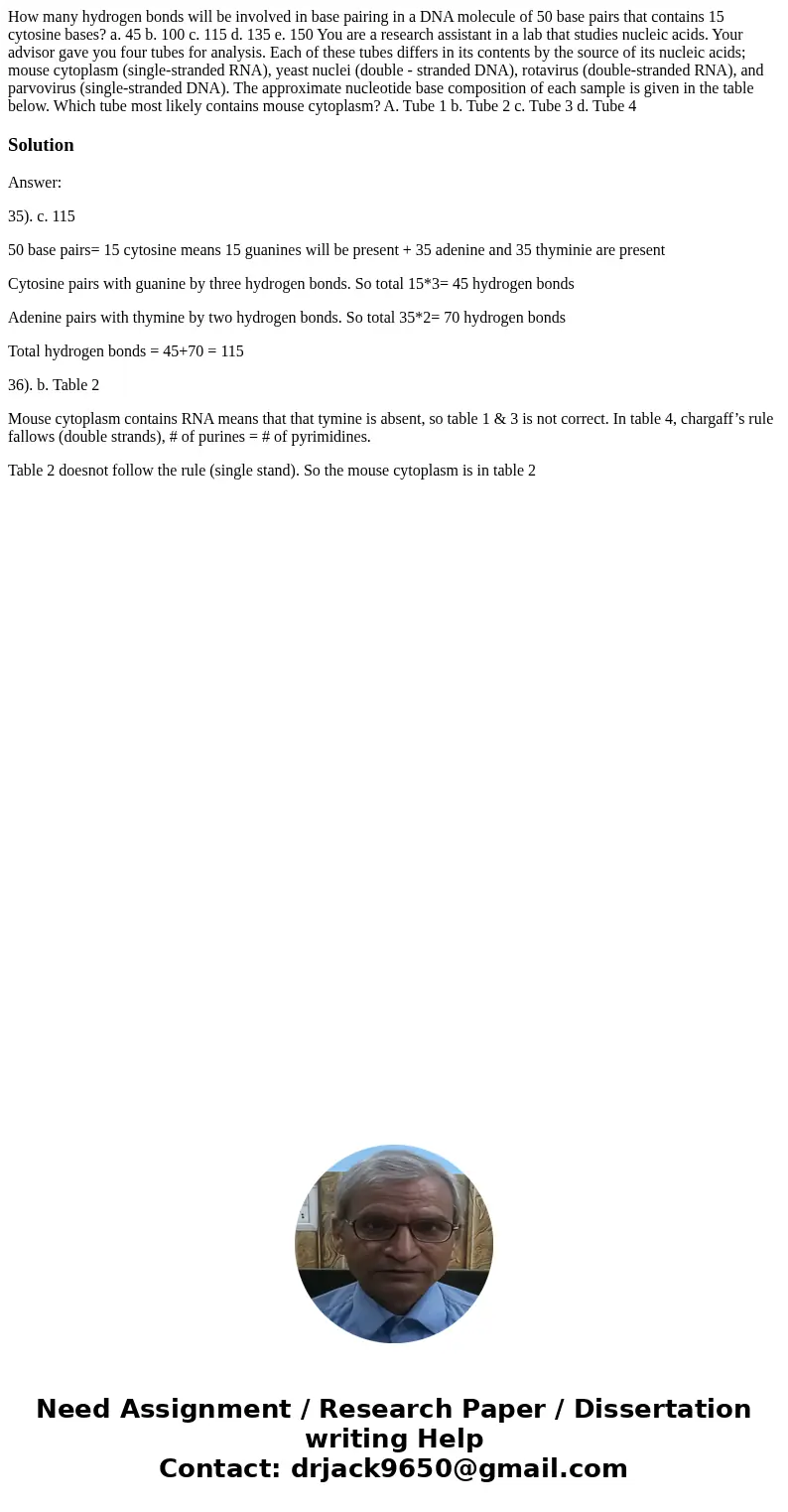How many hydrogen bonds will be involved in base pairing in
How many hydrogen bonds will be involved in base pairing in a DNA molecule of 50 base pairs that contains 15 cytosine bases? a. 45 b. 100 c. 115 d. 135 e. 150 You are a research assistant in a lab that studies nucleic acids. Your advisor gave you four tubes for analysis. Each of these tubes differs in its contents by the source of its nucleic acids; mouse cytoplasm (single-stranded RNA), yeast nuclei (double - stranded DNA), rotavirus (double-stranded RNA), and parvovirus (single-stranded DNA). The approximate nucleotide base composition of each sample is given in the table below. Which tube most likely contains mouse cytoplasm? A. Tube 1 b. Tube 2 c. Tube 3 d. Tube 4 
Solution
Answer:
35). c. 115
50 base pairs= 15 cytosine means 15 guanines will be present + 35 adenine and 35 thyminie are present
Cytosine pairs with guanine by three hydrogen bonds. So total 15*3= 45 hydrogen bonds
Adenine pairs with thymine by two hydrogen bonds. So total 35*2= 70 hydrogen bonds
Total hydrogen bonds = 45+70 = 115
36). b. Table 2
Mouse cytoplasm contains RNA means that that tymine is absent, so table 1 & 3 is not correct. In table 4, chargaff’s rule fallows (double strands), # of purines = # of pyrimidines.
Table 2 doesnot follow the rule (single stand). So the mouse cytoplasm is in table 2

 Homework Sourse
Homework Sourse